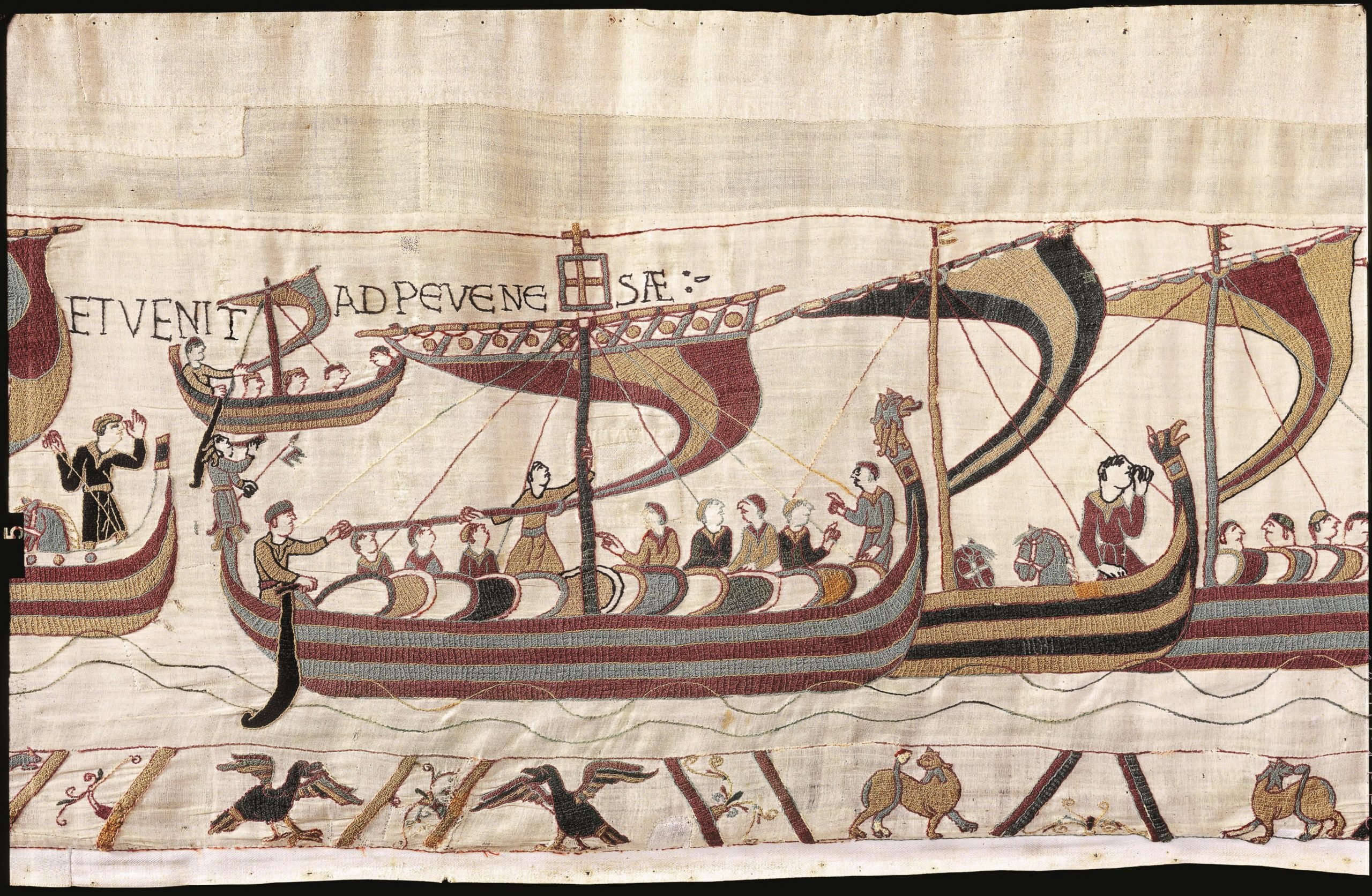
The Hunt explores art and ancient relics that are—alas!—lost to time. From the Ark of the Covenant to Cleopatra’s tomb, these legendary treasures have long captured the imaginations of historians and archaeologists, even if they remain buried under layers of sand, stone, and history.
The Bayeux Museum in Normandy houses one of the most impressive works of early medieval European embroidery: a 230-foot-long tapestry chronicling the events of the Norman Conquest of England in 1066. Intricately woven scenes tell how French ruler William the Conqueror crossed the English Channel and waged war against King Harold II, placing the island under new management following his victory in the infamous Battle of Hastings.
The origins of the Bayeux Tapestry are shrouded in mystery. While French legends insist the embroidery was commissioned by William’s wife Matilda, contemporary scholars believe it was commissioned by the king’s half-brother Odo, the Bishop of Bayeux and, later, Earl of Kent. It’s thought that the production of the tapestry, kept at the Bayeux Cathedral, coincided with the construction of the cathedral, which was completed in 1077.
Episode from the Bayeux Tapestry (ca. 1090). Photo: Universal History Archive/Universal Images Group via Getty Images.
Equally mysterious is the fact that the Bayeux Tapestry appears to be missing between eight and 10 feet of its original fabric. Experts believe that this section, which would have followed a scene depicting Harold’s defeat during the Battle of Hastings, would have shown William the Conqueror’s coronation as King of England on Christmas Day in 1066.
It’s unclear how and why this part of the tapestry was lost. According to the Bayeux Museum’s website, the embroidery remained in the cathedral up until the outbreak of the French Revolution, when, in 1794, the Bayeux district Arts Commission seized it on behalf of the state. Some say the tapestry was cut up and used as a cover for army carts, while others maintain one Léonard Lambert-Leforestier, a local lawyer, actually protected it from the army.
Plate from the Bayeux Tapestry (ca. 1090), depicting the Norman army crossing the channel. Photo: Hulton Archive/Getty Images.
After the revolution, the Bayeux Tapestry was displayed in the Musée Napoléon in Paris to mobilize support for the Corsican general’s planned invasion of Brittain. When those plans fell through and Napoleon was ousted, the embroidery was returned to Bayeux, where historian Simone Betrand said it was mounted to a winding apparatus that could have damaged the fabric even further.
The Bayeux Tapestry didn’t remain incomplete forever, though. In 2014, a team of professional embroiderers from Alderney, an island off the coast of Normandy, were tapped to create a panel showing William’s coronation in the style of the other scenes. Initially revealed at the Alderney Museum, it was later transported to Bayeux, where it can be viewed alongside the original.